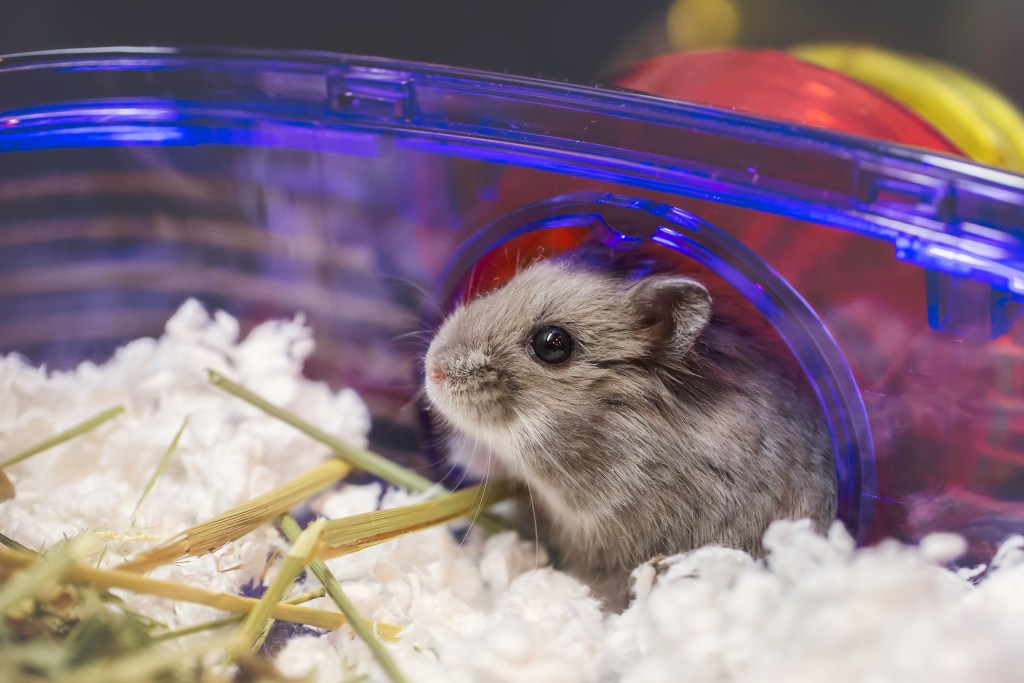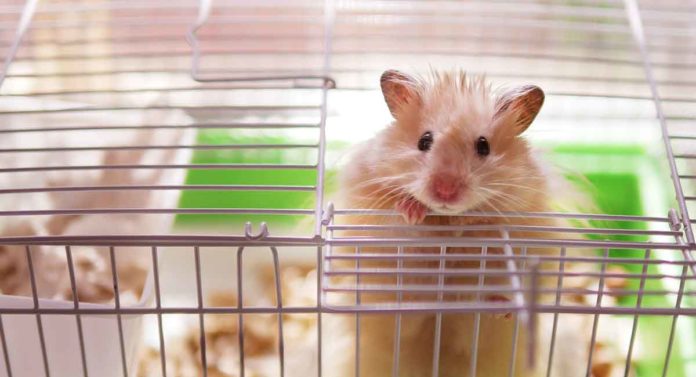When you decide to become the proud owner of a new hamster, you’ll have to get a few things ready prior to your new pet’s arrival. In order to prep his setup, you’ll need a cage, accessories, dishes, and bedding. Before you choose your cage though, you’ll want to find the right spot in your house where the little guy will live. That will help you determine which cage to get and how to configure it. Once you have that decided, you can go cage shopping to get one that fits perfectly in your selected location. There are lots of types to choose from: glass, wire, wood, plastic, or a combination of all those. Check out the best hamster cages for every space and style.

What cages are bad for hamsters?
Let’s get this out of the way first. The biggest mistake new hamster keepers make is buying a cage that’s far too small. Really, the bigger the better for this curious creature. You can also help keep him entertained by making sure you include lots of tubing, ladders, and a wheel. Combining all these features boosts even a simpler cage — so don’t worry if you wind up with a lackluster tank to start with. Another thing to remember is not to get a wire cage with bars that will come apart easily or a plastic one that can be chewed through.
Do hamsters prefer cages or tanks?
Both have their benefits, though the wire cage may ultimately be superior as it allows for better airflow (although that won’t serve every family best). One option is to find a cage that has a bit of wire and another section that’s more tank-like. Glass offers more protection if you have other pets or grabby children in the house. You’ll want to get a cage with bars that are really close together, especially for a dwarf hamster who can fit through much smaller spaces than you may think.

What kind of cage is best for a hamster?
You have plenty of options to choose from when it comes to the ideal hamster cage. All of these will give your animal the right amount of space and enrichment, so you can select the one that works best for you. Plus, all of them are highly rated by pet owners.
Favola Hamster Cage
The best of both worlds, you get a two-story mansion for your hamster with this housing. While on top, he can eat and drink or hide while carefully observing the world around him. Down below he may burrow or choose to run in the sweet wheel (included) for lots of exercise and entertainment. Reviewers call it simple to set up and very “hamster-friendly” since the ladder and floor won’t hurt their little paws. However, this one won’t work as well for someone looking for an epic tubing setup.
Midwest Critterville Arcade
Instead of offering two whole stories, this housing has a main cage area with a fun playtime section on top. All the business stays on the first floor while the party happens in the upstairs play space. He’ll love the opportunity to climb and run on the wheel anytime he likes, far away from his food and litter. A happy buyer comments, “I double love this setup,” and mentions that you can actually add an additional layer for even more space and fun for your hamster.
Living World Deluxe Habitat
Last but certainly not least, take a look at the deluxe version of what a hamster world can be. Instead of presenting your furry creature with more than one story, this one provides an extra-long space for him to run. Touted as the “bestest ever” and as a very good value for the price, it has lots of space for customizing. It doesn’t have many flashy accessories included but instead gives you a great chance to create your own design.
Final thoughts on hamster cages
No matter which one you choose, you can make it all your own. Start with a simple design and include only a few basic accouterments and then see what your new critter takes to. He might be a runner, in which case you’ll need to add multiple exercise zones and ample space for him to be able to scamper to his heart’s content. Or perhaps he’ll love to chew so you’ll want to litter the floor with specially made toys (and replace them frequently). Tubing will suit an explorer nicely and can be affixed to most cages. While you’ll want to carefully consider the initial purchase, think of the cage as an evolving home rather than a one-and-done. He’ll love having new places to venture to.
Editors' Recommendations
- A simple guide to what to feed tadpoles in your aquarium
- Is my rabbit pregnant? 5 telltale signs you should know
- Best reptile pets: These are the 5 most affectionate reptiles you can welcome into your home
- 3 reasons not to give pet rabbits, baby chicks, or ducks this Easter
- Bunny care 101: If Easter inspires you to adopt a rabbit, read this first




